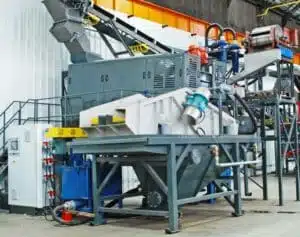Contact us
Dense medium separation
Separations in a dense medium, also called ‘flotation ‘, make use of a liquid medium into which are plunged the components to be separated. This medium may be water, an organic liquor (laboratory only), a brine (calcium chloride or zinc type salts) or a suspension made from clay, sand, magnetite or ferrosilicon, the suspension thus behaving like a pseudo-fluid. The mediums cover densities from 1.0 to over 3.0, the latter being adjusted to an intermediary value to that of the components to be separated with a precision of (0.05). The heaviest components flow in the medium whilst the lightest float and are thus recovered separately.
The CTP carries out separations at laboratory level in a liquor in order to study the potential of the technique or to assess the liberation meshes (granulo-densimetry). It has a pilot flotation unit of the vibrating drum variety, which allows the technique based on suspensions to be continuously tested.
| Technique | Type | Medium | Density | Capacity | Particle size |
|---|---|---|---|---|---|
| Dense liquors | ZnCl2, Bromoform, Polytungstate | 1 to 3.3 | 1 to 2 kg/h | 75 µm to 20 mm | |
| Floating drum |
 |
Water, Slurry, Sand, Magnetite, Ferrosilicon | 1 to 2.9 | 1 to 5 T/h | 10 mm to 80 mm |
All
Our expertises